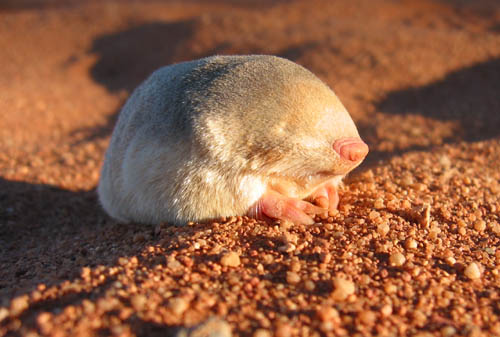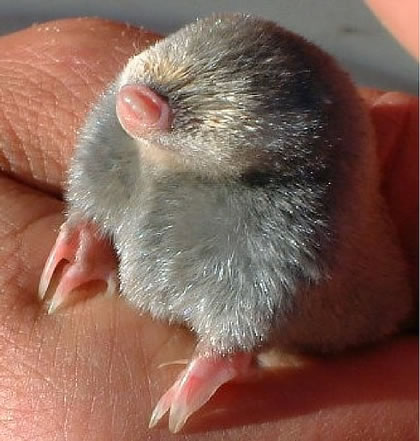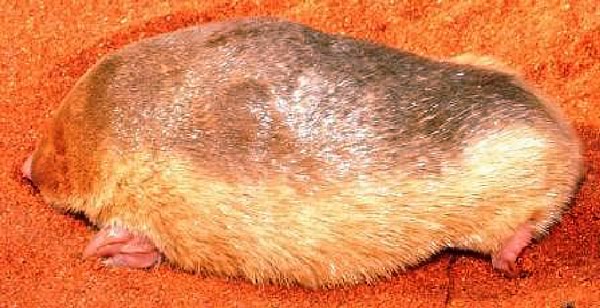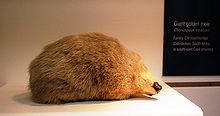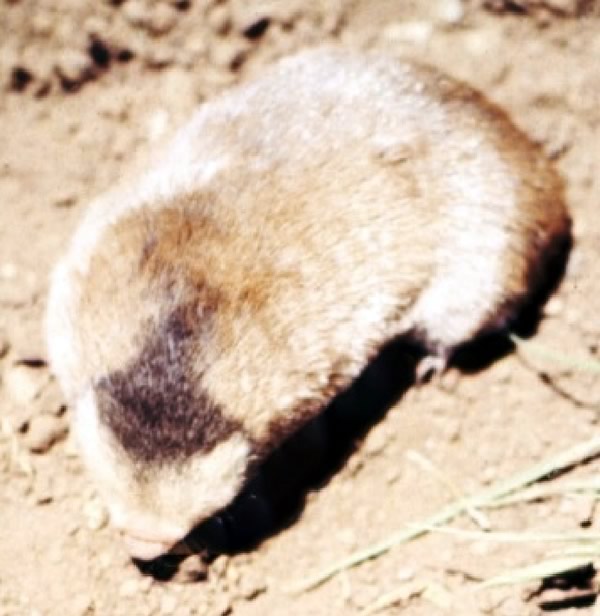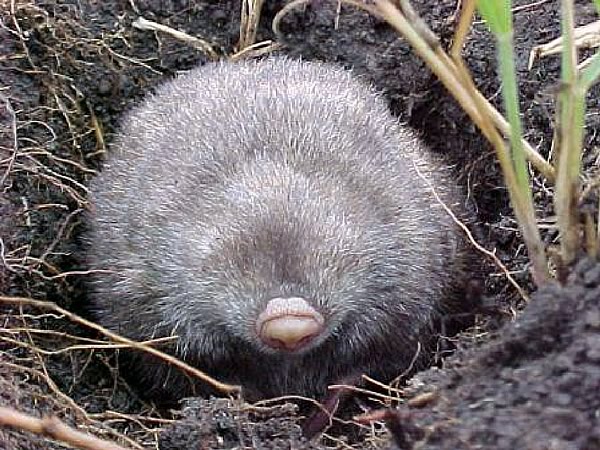Arend's golden mole
Arends Goldmull ( Carpitalpa arendsi ) is a mammal of the family of golden moles ( Chrysochloridae ). Is named the type after the taxidermist Nicolas Arends from Kaffrarian Museum, who in 1951 collected the type specimen.
Features
As with all gold Mullen is similar to the body of these animals which the moles with whom they are not related, and is adapted to a grave lifestyle. The forelimbs are modified into claws grave. In addition to the large central claw, the claw of the second finger is also well developed. As with all gold Mullen a tail is not externally visible, the ear cups are missing, the eyes are covered with fur and snout wearing a leather-like upholstery, which also serves the digging activity.
This type reaches a body length 10-14 centimeters and a weight of 40 to 80 grams, making it one of the medium sized members of their family. The coat color is black or dark brown at the top and may have a green or reddish metallic luster. The sides and the bottom are lighter.
Dissemination and lifestyle
Arends Goldmull inhabited a small area in eastern Zimbabwe and the adjoining parts of Mozambique. Over the life of these animals, little is known. Like all golden moles they live mostly underground, where they create programs for foraging and as resting places. The diet should consist of insects and earthworms.
Threat
The IUCN lists Arends Goldmull as threatened ( vulnerable ). The reasons for this lie in the small area of distribution, the destruction of their habitat and the political instability in their home region, the protective measures leaves little grip.
System
Arends Goldmull is today regarded as the only species of the genus Carpitalpa, earlier classifications they had been classified in Chlorotalpa. According to some researchers themselves could also be closely related with the chair manni living in Central Africa Art Chrysochloris.

